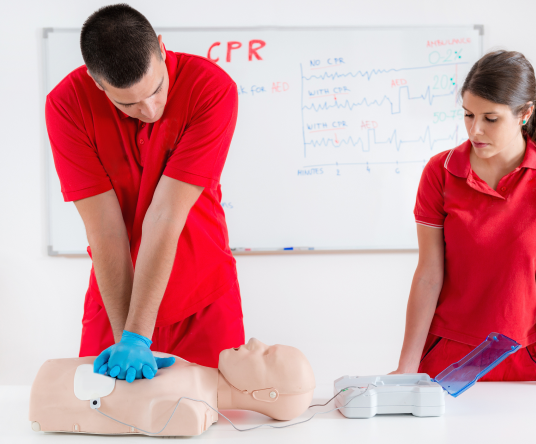Chapter 20: Bites and Stings Emergencies
Bites and stings can happen just about anywhere—at home, at work, or while traveling. Whether it’s from a pet, a wild animal, or an insect, knowing how to respond with proper First Aid can help reduce pain, avoid infection, and even save a life. Some reactions can also be allergic and may require the use of an epinephrine pen (see Chapter 7).

Common Causes
These types of injuries can come from:
- Animal or human bites
- Bee or wasp stings
- Insect, spider, or snake bites
- Jellyfish stings
- Scorpion stings
- Ticks
Signs and Symptoms to Watch For
While reactions can vary, some common symptoms include:
- Rash, headache, or fever
- Muscle spasms or joint pain
- Puncture wounds
- Nausea, vomiting, or abdominal pain
- Loss of appetite
- General discomfort or feeling unwell
Emergency Types and How to Respond
- Animal or Human Bites
If the bite breaks the skin, it can lead to infection. Minor bites may only need basic cleaning, but deeper wounds—especially from unknown animals—can be more serious. Watch for unusual animal behavior, which may be a sign of rabies.
What to do: Stop any bleeding with a dressing and apply ice for up to 20 minutes. Seek medical attention if the bite is deep, the animal is unknown, or the wound becomes red or swollen.
- Snake Bites
Unless you’re certain the snake isn’t venomous, always treat it as if it is. Venomous bites may cause pain, swelling, nausea, and weakness.
What to do: Keep the bitten area still and avoid movement. Remove tight clothing or jewelry near the bite. Call 9-1-1 immediately.
- Stings (Bee, Wasp, Spider, Scorpion, Insect)
If the person isn’t allergic, most stings result in minor pain, swelling, or itching. However, poisonous species or allergic reactions can lead to serious symptoms like seizures, trouble breathing, or even unconsciousness.
What to do:
- If allergic: Use an epinephrine pen immediately if available.
- For bee stings: Gently scrape away the stinger with a dull edge—don’t squeeze it.
- Apply ice to reduce swelling (up to 20 minutes).
- Ticks
Ticks can carry disease and must be removed properly.
What to do: Use tweezers to grab the tick close to the skin by its head or mouth. Don’t twist or squeeze it—just wait for it to release. Once removed, wash the area thoroughly.
- Jellyfish Stings
These stings can be painful and need quick care.
What to do: Wash the area with vinegar for at least 30 seconds to neutralize toxins.
Final Steps
No matter the type of bite or sting:
- Clean the area with soap and running water.
- If symptoms worsen or breathing problems begin, call 9-1-1.
- If the person becomes unresponsive, begin Cardiopulmonary Resuscitation (CPR). If you’re not trained, provide Hands-Only CPR.
You’ll learn how to handle all these situations confidently in this Online First Aid Course, giving you the tools to act quickly and safely when it matters most.

